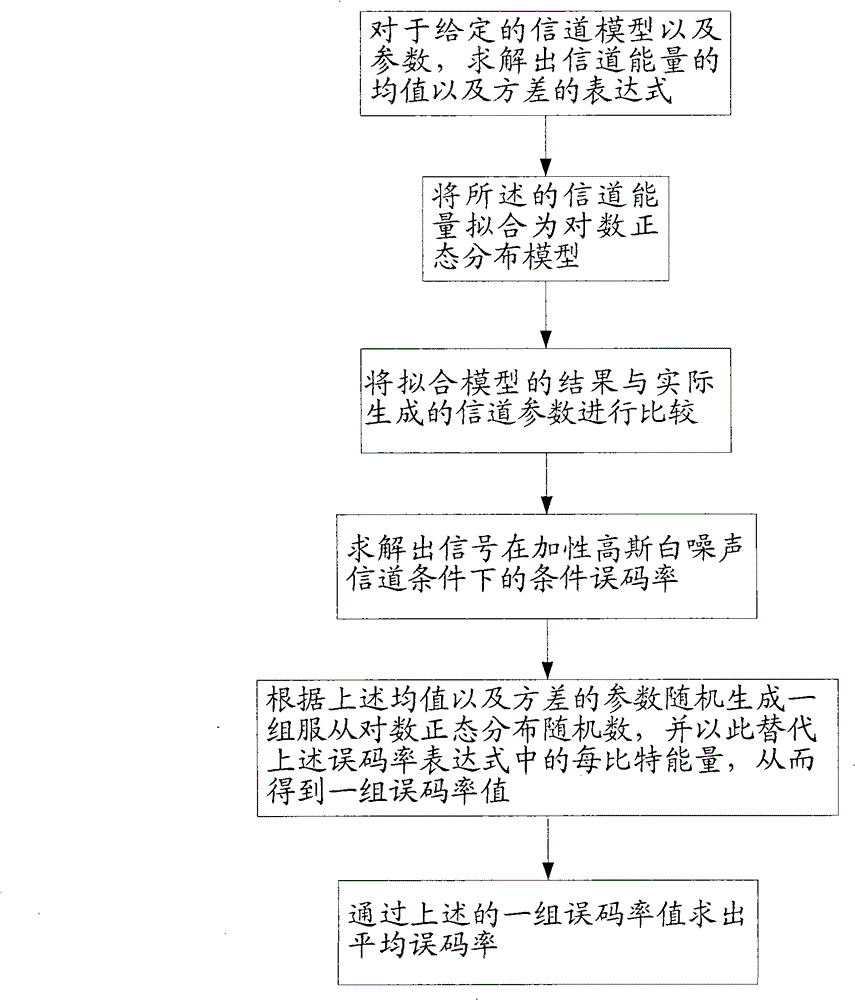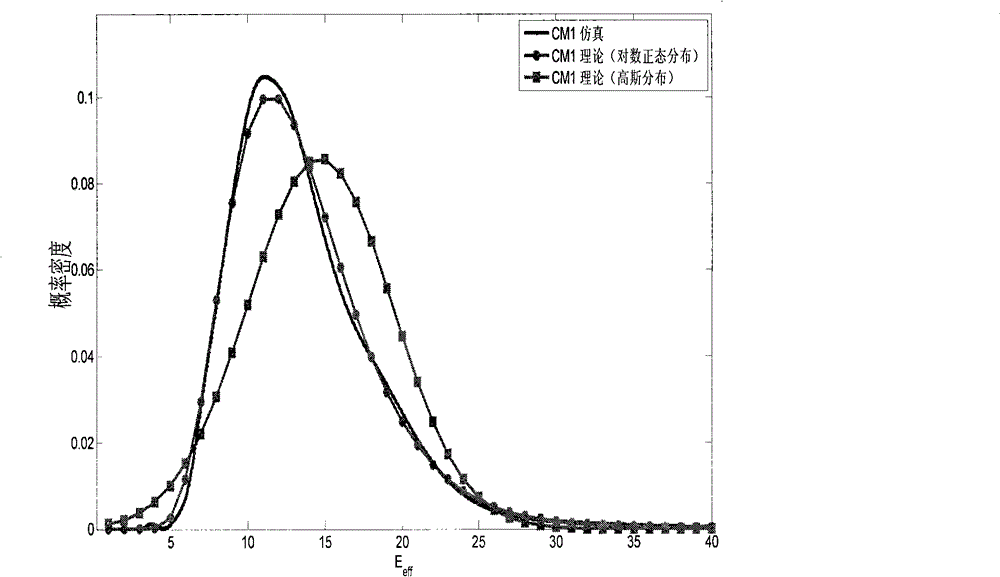Ultra-wideband non-coherent system average bit error rate estimating method under S-V modified model fading channel of IEEE802.15.3a
A technology of average bit error rate and correction model, which is applied in transmission system, transmission monitoring, electrical components, etc., can solve problems such as difficult receiver analysis, ultra-wideband dense multipath channel complexity, many random variables, etc., and achieve the goal of simplifying evaluation The effect of the process
- Summary
- Abstract
- Description
- Claims
- Application Information
AI Technical Summary
Problems solved by technology
Method used
Image
Examples
Embodiment Construction
[0031] The following content is a further detailed description of the present invention in conjunction with specific preferred embodiments, and it cannot be assumed that the specific implementation of the present invention is limited to these descriptions. For those of ordinary skill in the technical field of the present invention, without departing from the concept of the present invention, some simple deduction or replacement can be made, which should be regarded as belonging to the protection scope of the present invention.
[0032] The structure of the receiver aimed at by the evaluation method of the average bit error rate of the ultra-wideband non-coherent system of the present invention under the S-V correction model fading channel of IEEE 802.15.3a is as follows figure 1 As shown, its working process is: first, the signal passes through the square law detector, and then enters the interval integrator. The choice of modulation mode can be obtained by processing the inte...
PUM
 Login to View More
Login to View More Abstract
Description
Claims
Application Information
 Login to View More
Login to View More - R&D
- Intellectual Property
- Life Sciences
- Materials
- Tech Scout
- Unparalleled Data Quality
- Higher Quality Content
- 60% Fewer Hallucinations
Browse by: Latest US Patents, China's latest patents, Technical Efficacy Thesaurus, Application Domain, Technology Topic, Popular Technical Reports.
© 2025 PatSnap. All rights reserved.Legal|Privacy policy|Modern Slavery Act Transparency Statement|Sitemap|About US| Contact US: help@patsnap.com



